Shall we bet together on Hybridization?
In the current Spanish energy market, it is identified a proliferation of photovoltaic (PV) projects in advanced stages of development, ready for construction (Ready to Build) or with a few months of operation. Even though these projects have the base case defined for the corresponding business model, the crucial question is: Is it possible to improve the results by optimizing costs, increasing production, and/or ensuring a more stable energy supply to the grid?
Being a pioneer in renewable energy solutions, Spain region has embraced hybridization as a strategy to optimize renewable energy projects. There are different solutions, such as solar-thermal, solar-wind, wind-hydraulic, as well as the hybridization of any of these technologies with energy storage systems. However, in this article, we will focus on the hybridization of photovoltaic projects in an advanced stage of development or in operation with wind projects in development, a technical combination that promises to boost both efficiency and sustainability.
Below, a summary of the most representative technical aspects of hybridization to be considered is shown:
- Complementarity of Solar and Wind Resources: The integration of both technologies allows for the optimization of energy production by combining a solar profile (very stable and with very little variation throughout the year) with a variable wind profile, highly defined by the conditions of its location. This hybridization is especially beneficial in cases where wind generation profiles are mainly nocturnal, perfectly complementing a PV generation profile and thus minimizing energy losses at the connection point due to curtailment.
- Wind Potential Study: To obtain reliable results and minimize uncertainty, it is crucial to conduct an accurate study of the wind potential in areas near the photovoltaic plant. The spatial resolution of the data, appropriate methodology, and consideration of possible existing elements in the surroundings that may alter the final resource are key aspects.
- Strategic Location Selection: In the development of new wind projects for hybridization, the proper selection of the location is fundamental. Factors such as the feasibility of the land from a construction point of view (topography and access) and administrative-environmental (protected or limited areas) must be considered.
- Optimization of Existing Infrastructure: This implies the design of the turbine locations, integrating them strategically to maximize installed capacity and minimize additional costs. Furthermore, placing the wind farm in areas close to the step-up substation of the existing PV plant is essential to capitalize on the interconnection infrastructure of the PV plant and reduce electrical losses.
- Feasibility of Hybridization: To ensure both technologies operate simultaneously throughout their useful life, the feasibility of hybridization in existing PV plants, even those with more than 10 years of operation, shall be studied.
- Selection of main equipment: The efficient design of the wind turbines, considering the optimal turbine model, is essential for the good performance of the project.
As project development progresses, the application of algorithms for intelligent energy management becomes key. These algorithms can anticipate weather conditions and optimize the operation of both solar modules and wind turbines, maximizing the performance of the hybridized project.
Although the initial investment in hybridization may be significant, it is an option to consider for investors seeking to improve the long-term profitability of the project and maximize the utilization of the capacity granted at the grid connection point. This solution would position itself as a sustainable investment, generating clean energy and reducing the carbon footprint.
With the aim of maximizing equivalent hours and achieving an optimal Levelized Cost of Energy (LCOE) for our clients, Vector Renewables team supports investment funds, independent power producers, developers, and financial entities in decision-making processes. We have more than 15 years of experience in renewable energies and a track record exceeding 206 GW across different technologies, advising our clients from a technical standpoint to maximize project potential.
If you are seeking technical advice for your project, do not hesitate to contact us through our website.
At Vector Renewables, we are committed to leading the transition towards a more sustainable and efficient energy future.
When you subscribe to the blog, we will send you an e-mail when there are new updates on the site so you wouldn't miss them.

